The Lute Player – Finishing Up
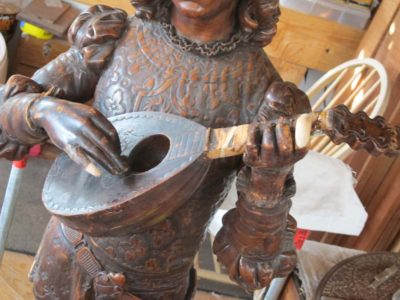
With the structural work and wax fills now complete I turned my attentions to the aesthetic integration of The Lute Player. For the most part the idea of “invisible repairs” is not necessarily part of the lexicon of furniture and wooden object conservation. This is because the quest for perfect appearance usually requires far more intrusion (read: inflicts far more damage) to the artifact than is appropriate, especially when you consider that the preservation of the maximum possible fabric and character of the artifact is the primary goal. In that context I usually strive for the repair to be unobtrusive rather than invisible. The furniture conservator’s guide is the “Six Foot, Six Inch Rule.” This is a shorthand way to describe repairs that are unobtrusive or unnoticeable upon standard viewing in a museum gallery setting (the “Six Foot” part) yet be identifiable on close inspection (the “Six Inch” part). The interpretation of this rule is variable, unique to each object.
In devising an inpainting strategy for a complex wooden object like The Lute Player there is a definite hierarchy to the importance of each of the components of appearance. As long as I first got the gray value right (almost always the single most important component of successful wooden object inpainting) and reasonably close in the gloss (usually the second most important component, unless the primary lighting for the object in from behind in which case it is the most important) I had tremendous latitude in my use of hue, chroma, transparency, uniformity, etc.

My first task in this final process was to bring the new elements into visual continuity with the remaining surfaces, which were themselves in less than pristine condition. I accomplished this with a combination of materials and techniques built up in multiple thin layers, including gauche with water, gauche in aqueous shellac, and pigments and dyes in solvent borne shellac applied with a fairly dry brush. One of the problems in this case was the varying gloss of the object surface and the inpainting surface as I was working. I often lightly swabbed the surrounding areas with odorless mineral spirits to impart saturation and gloss to assist me in my work.
Since the fingerboard and lute neck had been so badly damaged and frequently worked over I had a fairly free hand to attack the problem more aggressively than would have been the case if the adjacent surfaces were original or pristine. Once those regions were completed I gave the entire object a cleaning first with a 1% aqueous detergent solution followed by a damp wipe with distilled water, then followed by a swabbing with naphtha. With that it was ready for the final assault.
I applied a clear paste wax over the entire surface, followed by a pigmented paste wax to both push the overall tonality in the right direction and impart a degree of uniformity to the sun damaged areas vis-a-vie the object as a whole. I buffed the wax application with a large house painter’s bristle brush.
And then it was done.
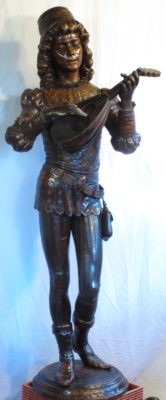
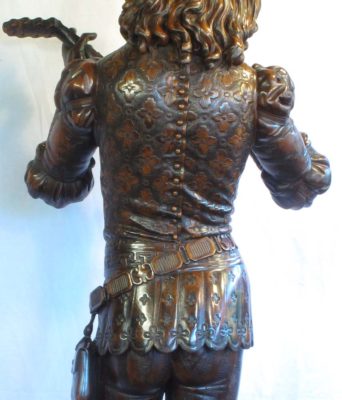
The setting when he got back home wasn’t conducive to the best photography, but he looked pretty good there.
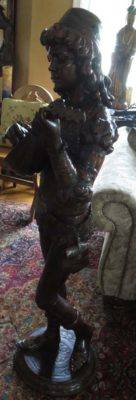
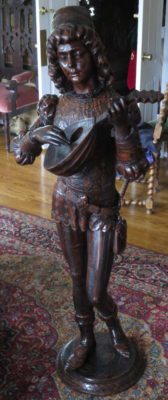


Join the Conversation!